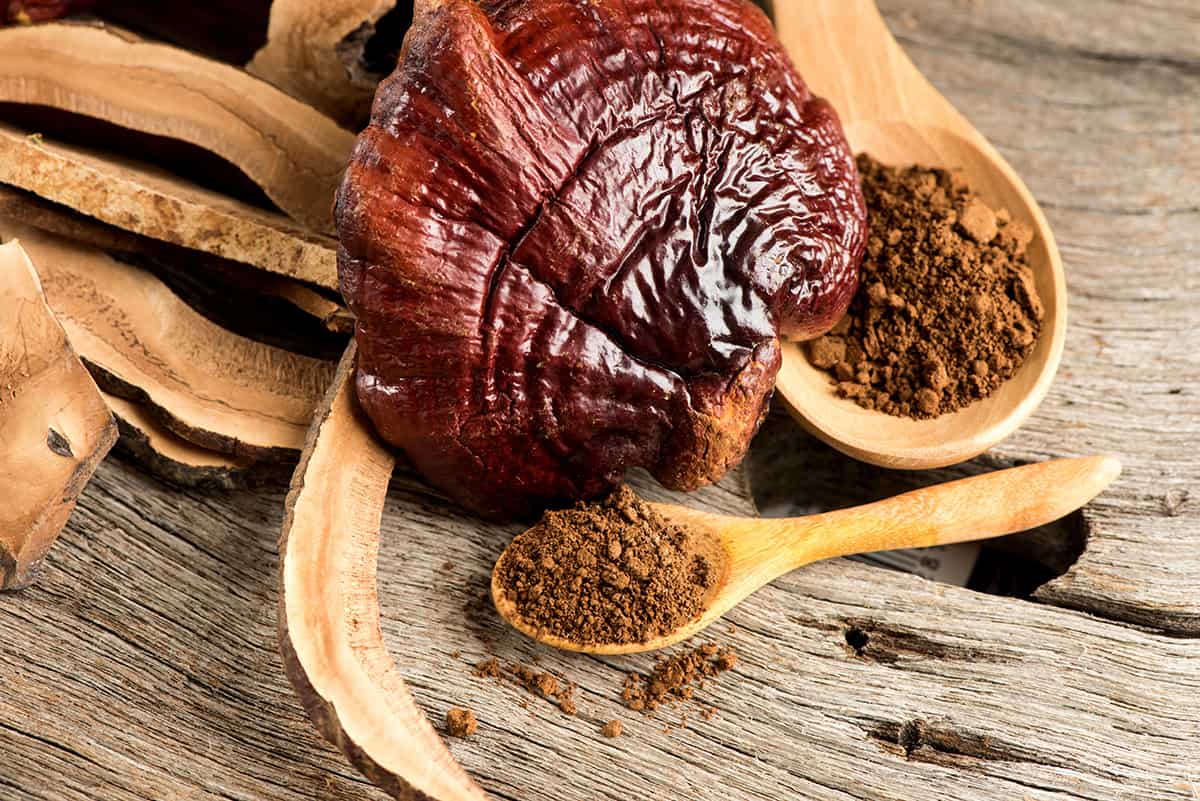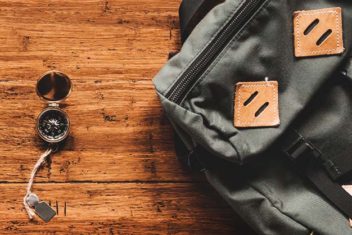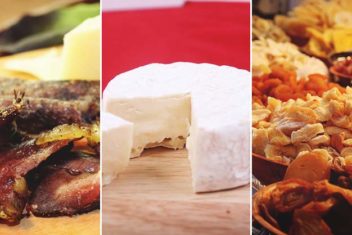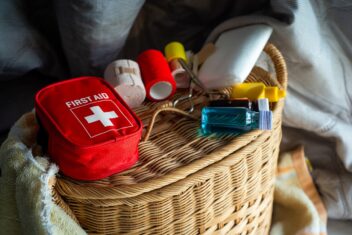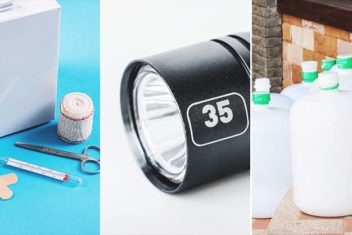If you’re interested in natural medicine, chances are you’ve come across reishi mushrooms at some point. These fungi are treasured by herbalists and traditional Chinese medicine practitioners and have been used therapeutically for thousands of years.
The good news is that they grow quite prolifically worldwide! This means you’ll likely be able to find some when you’re out on your next foraging adventure.
What is Reishi?
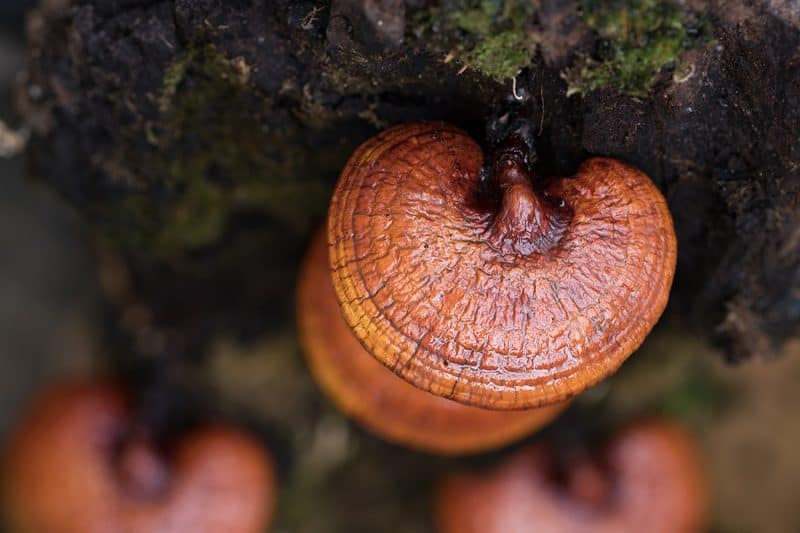
The genus known as Ganoderma is a type of fungi that grows on various tree species. They’re generally referred to as “shelf fungi” in English, and they have a number of beneficial properties when used medicinally. In fact, these fungi—known as “reishi” in Japanese or “lingzhi” in Chinese, have been referred to as “the mushrooms of immortality” for several millennia.
Many Ganoderma species have remarkable immune-boosting and anti-inflammatory properties. Furthermore, they seem to be most beneficial when used preventatively. [1]
In fact, research has shown that the primary Asian species, Ganoderma lucidum, has around 400 beneficial, bioactive compounds. Not only do these have immune-enhancing and anti-inflammatory actions, they also show antimicrobial, anti-tumor, and free radical scavenging activities. [2]
Two main North American species are Ganoderma tsugae and G. oregonense. The G. tsugae fungi are named for the Tsuga conifers they grow on, colloquially known as hemlock. These trees aren’t poisonous in the least. They got their name because their needles smell similar to water hemlock when crushed.
As you might imagine, G. oregonense fungi are so named because they’re prolific in the Pacific Northwest. Like Oregon. Ohhhhhh. They grow on conifers in the PNW, and can get absolutely huge: up to a yard across, in some cases. Check out this image to get an idea of this giant species.
I’m going to be focusing on G. tsugae, as these are the ones I’m most familiar with. I’ve harvested them from various spots on my property, and I’ve managed to figure out the best way to wildcraft them without maiming myself.
How to Identify and Harvest Reishi
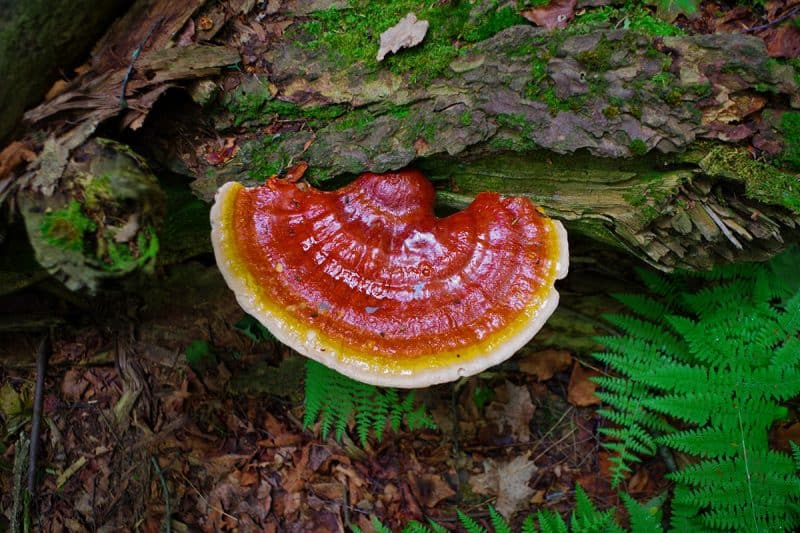
Various Ganoderma species are pretty easy to identify. They tend to have glossy brown, brownish-red, or orange tops, and porous white underbellies.
The lower white portion darkens to beige-brown as they age. When you’re foraging for reishi, be sure to harvest fungi that are still white underneath. They’ll be the freshest and most potent, rather than their more dehydrated counterparts.
Reishi mushrooms don’t have any gills, and their white portions will bruise a bit if you poke into them. They grow in fan-like or kidney shapes, and can vary from one to four inches in thickness.
As mentioned, only harvest the ones with white bellies. Once they’ve started to brown, they begin to decay… and you don’t want to make medicines out of decaying plant matter. Just the healthy stuff.
You’ll find these shelf fungi on dead or dying conifers. Remember how G. tsugae fungi got their name? Well, look for them wherever stands of hemlock trees grow. I usually find them growing within three to five feet above ground level, but they can show up anywhere.
Be sure to familiarize yourself with reishi photos before you go tromping into the woods after them. They don’t have any poisonous lookalikes, which is reassuring, but it’s always best to know what you’re looking for. You may see a similar-looking conk species named Fomitopsis pinicola. They’re super hard to the touch and won’t poke inwards or bruise when you prod at them.
Harvesting Equipment:
Okay, now that you’re fairly confident that you know what you’re looking for, it’s time to suit up.
Since you’ll be foraging these fungi during the summer, dress for the weather and your surroundings. Out here, that means high boots to fend off ticks. We also dress in light but tightly woven fabrics to ward off mosquitoes. I also wear leather gloves because reishi can be rather stubborn to harvest.
If you have a good all-purpose utility knife, take that with you. Otherwise, a Swiss Army or Leatherman with a saw blade option will work too. Swords can be fun as well, but you may startle other foragers.
Bring a large cloth bag or knapsack, as fungi don’t fare well when carried in plastic bags. I’d also advise bringing water, as giving dusty reishi a quick rinse can reveal their characteristic glossy tops. This makes them easier to identify.
How to Remove the Fungi
When you find a luscious reishi that calls out to be harvested, try to pull down on it. You might be pleasantly surprised and discover that it just pops off without a great deal of effort.
This has not been my experience.
Apparently, others have had an easier time, but my reishi adventures have required a bit more hacking and sawing. And swearing.
If it doesn’t just let go of its grip on the tree, take your knife and make a vertical cut about 1/2″ out from the tree, blade pointed out towards yourself. Now stand to the side where the blade is facing, and draw it gently towards you. I’ve found that moving it up and down in a sawing motion makes this process a lot easier.
This will free the fungi by half, and you might be able to pull it free. My guess is that it’ll still be in “nah-not-gonna-let-go land,” so repeat the process in the opposite direction. If you have a friend with you, get them to hold the cloth bag open so the fungi can drop into it.
If there are other ideal reishi around, feel free to grab a couple more. Just please remember to harvest ethically and responsibly. Don’t over-harvest from one particular area, and try to gather fungi that have already released their spores. You’ll be able to identify these because they’ll be coated in a light brownish-rust powder. Brush these off into the wind so the spores can fly off and multiply on other trees.
Processing and Storage
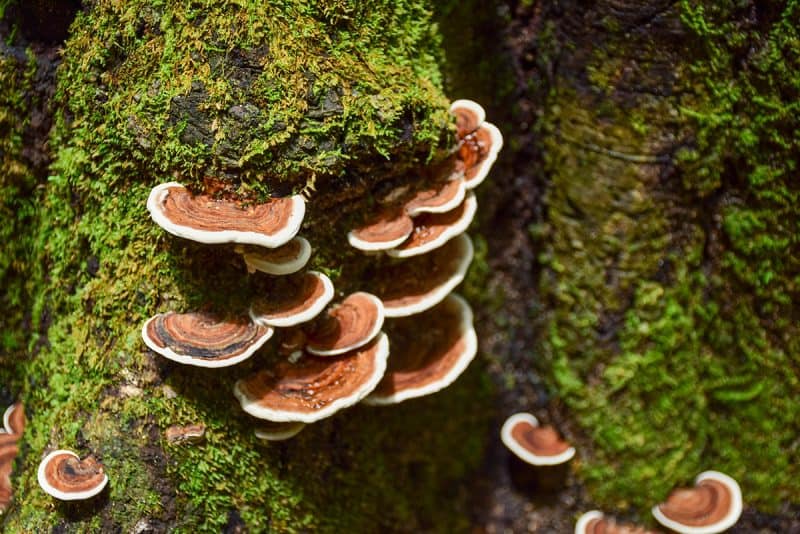
Reishi starts to lose its integrity quite quickly after harvesting, so try to process it as soon as you get it home. Use a damp cloth to wipe it down thoroughly. This should remove any dust, soil, stray conifer needles, and dead insects.
If you plan to make a tincture out of it, chop up enough to fill a quart jar 2/3 of the way. Then, pour enough vodka, brandy, or other 80- to 100-proof alcohol over to cover it completely. Fill the jar to about 1/4″ of the top. Then put the lid on and store it in a dark cupboard, shaking occasionally, for six to eight weeks.
Alternatively, if you’re not going to use the fresh fungi immediately, you’ll need to dry it.
I once made the mistake of trying to dry Ganoderma slices in hanging mesh baskets instead of in the dehydrator. Oh, they dried fairly well but developed a rather spectacular fuzz in the process. Needless to say, I lost that entire batch. Don’t make that mistake.
Grab a bit, sharp knife or cleaver, and cut the fungi into 1/2″ slices. Arrange these on your dehydrator shelves, and dry them at 120°F to 130°F for 10-12 hours. You can do the same thing in an oven on baking sheets, but you’ll need to turn the slices a few times during the process.
You’ll know that the slices are ready when they’re “cracker dry.” This means that they’ll snap like a cracker when you try to bend them.
Best Medicinal Preparations
Most herbalists agree that the best way to use reishi medicinally is in a decoction or tincture.
The former is a slow-simmered tea type of thing prepared by simmering the fungi for about an hour. This technique draws out the medicinal properties with heat and time and has to be consumed immediately. It can be stored in the fridge for a few days, but it’s best taken fresh. Just note that this drink will be quite bitter, so you might want to belt down a shot or two in a single go.
Tinctures also draw out all the good stuff; only it’s the alcohol content that sucks out the beneficial constituents while they’re infusing for a month or so. These tinctures remain shelf-stable for years, so you can take a few drops whenever you like. They’re also concentrated, so you only need a few drops to get all the beneficial effects.
Another Option…
There’s another option if you prefer an instant reishi fix. Decoct the fungi in a crockpot overnight, strain out the chunks, and boil it down until it’s a super-concentrated, gravy-like texture at the bottom of the pot. Then add in flour of your choice (corn starch is a great option), and let that saturate well. Next, form patties from that mixture and dry them in a dehydrator or oven until they crumble to the touch.
Process these into powder in a coffee grinder, and store in an airtight jar. Then, add a spoonful to soups or stews whenever you make them. This will add a dose of beneficial compounds to the entire batch.
As usual, a caveat: be sure to do proper research before taking any medicinal preparation. Reishi has many benefits, but it can also contraindicate with medications for hepatic (liver) conditions. Consult with a herbalist, naturopath, or traditional Chinese practitioner if you have any doubts, and please discontinue taking anything if it makes you ill.
References:
- Basnet, B. B., Liu, L., Bao, L., and Liu, H. (2017). Current and future perspective on antimicrobial and anti-parasitic activities of Ganoderma sp.: an update. Mycology 8, 111–124. doi: 10.1080/21501203.2017.1324529
- Paterson, R. R. M. (2006). Ganoderma–a therapeutic fungal biofactory. Phytochemistry 67, 1985–2001. doi: 10.1016/j.phytochem.2006.07.004
